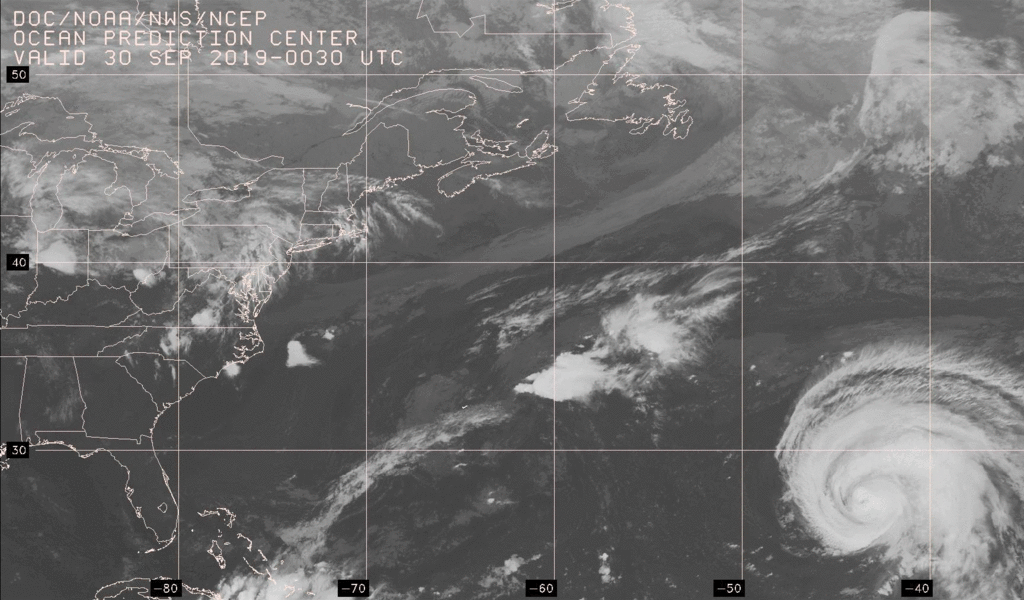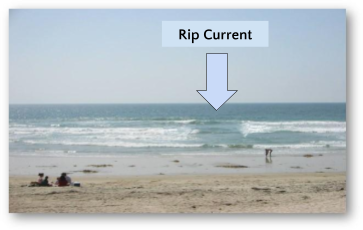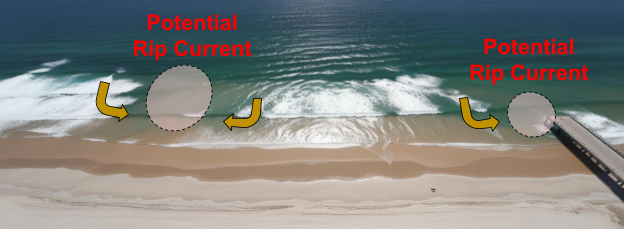Rip Currents: A Hurricane's Hidden Hazard
Understand how hurricanes cause deadly rip currents and why you should know the risk before heading to the beach.
Rip Currents
Why Are Distant Hurricanes So Deadly?
Have you ever heard of hurricanes referred to as “fish storms"? This label is often used for hurricanes that form over the ocean and stay far from land. A common misconception is that storms brewing in the open ocean are harmless. However, these storms can send powerful WAVE ENERGY to the coast, causing deadly HIDDEN RIP CURRENTS. They can be very dangerous because their risks often go unnoticed.
Wave Energy
Hurricanes can generate waves that travel hundreds or even thousands of miles away from the storm. The waves that reach the coastline can manifest as powerful swells with large breaking waves or smaller swells that still carry enough energy to push a significant amount of water toward the shore. When these swells break one after another with little time for the water to retreat to the ocean, the water accumulates near the shoreline, a phenomenon referred to as wave setup. This increase in water height can be subtle, but if you observe waves crashing one after another, keep in mind that the water needs a way to flow back—which often results in a powerful rip current. To learn more about this process, visit Rip Current Science.


Hidden Rip Currents
Rip currents are a hidden hazard that many beachgoers don't recognize until it's too late. These powerful streams of water flow from near shore to the open ocean, making them dangerous and potentially life-threatening. Even experienced swimmers can be caught off guard, as rip currents can occur on fair-weather days when the ocean looks inviting. However, a distant weather system sending wave energy to the coast can quickly turn a beautiful day into a dangerous situation.


Rip currents can occur on fair-weather days.
Picture this: You arrive at a beach on a calm, sunny day. The wind is light, the ocean looks peaceful, and you're excited to jump in the water, whether for a swim or fishing along the shore. In front of you, there's an area of calm water, with waves breaking to your right and left. Far off to the right, there's a pier, and you notice a visible sandbar with shallow water nearby. Can you identify where the hidden rip current might be?

Move your mouse over the image to learn more about rip currents.
Potential Rip Current: The calm water between breaking waves is likely already a rip current between two sandbars, or it could quickly become one. These currents can quickly pull even experienced swimmers away from shore, making such spots dangerous.
Swimming where waves are breaking is safer, but it still poses risks. Stay within a safe standing distance from shore and always exercise caution, as breaking waves can knock you off your feet and push you into a rip current.
Potential Rip Current: Swimming near the pier is risky since rip currents can suddenly develop near these structures. Often, warning signs are placed near these areas advising you to stay away. Even when standing in shallow water, watch for sudden waves that can sweep you into deeper water or a rip current.
Learn more about rip currents at Rip Current Overview.


